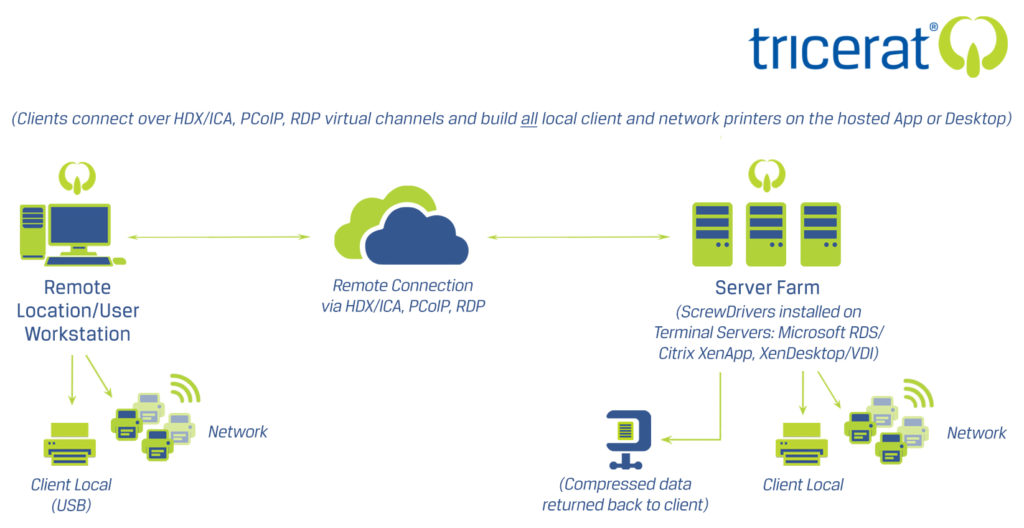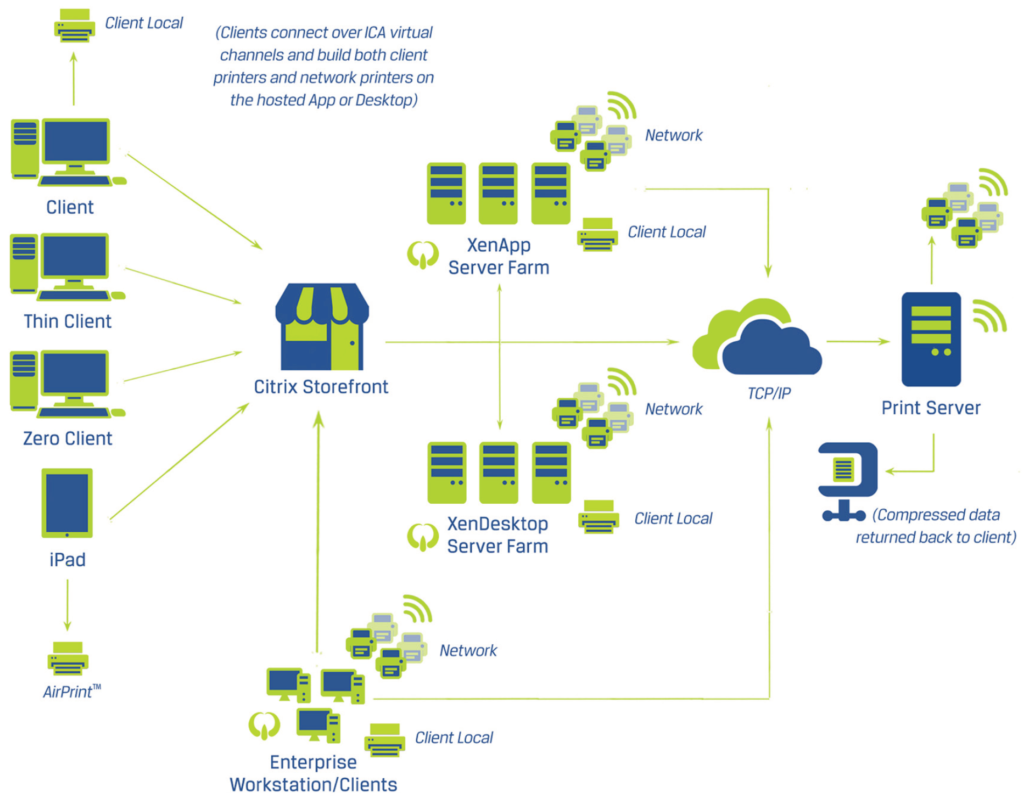I’ve always had a big interest in printing. It’s something I have written about and presented on extensively in the past. Throughout the years I have had my fair share of failure when it comes to printing in Citrix/RDSH/VDI based environments (who hasn’t?) so I decided to dig in a bit deeper. Not too long ago I got introduced to Tricerat, a very simple, yet effective and efficient solution when it comes to taking care of all things print related within Citrix environments, or any other type of environment, for that matter. Throughout this post I’d like to share with you how they simplify print management and let you, the IT Administrator, focus on Citrix – not printing!
About
Tricerat has been around for over 20 years (founded in 1997). In fact, they are one of the oldest Citrix partners out there, needless to say they have a ton of experience. And while their main focus has been on Citrix based architectures throughout the years, their solutions can be used for all types of platforms/environments out there, including VMware and Microsoft and their accompanying protocols – it simply works on top of what is already there.
Their Net Promotor Score is over 70% while having over 10.000 customers world-wide, numbers worth sharing.
Universal
The concept of a universal print driver is known by many, you install a single print driver on your SBC/VDI based machine and that’s it. No longer do you have to worry about installing, configuring and maintaining dozens of drivers.
However, in practice universal drivers work ok until you need a specific, more advanced print feature, which is only supported by the native print driver.
Wouldn’t it be great to have a single universal driver that you install and manage without the loss of native print driver functionality?! In other words, a universal print driver that has the exact same capabilities and features of all your native print drivers combined. Well, good news, Tricerat offers just that.
Screw Print Drivers
Let’s start at the beginning. Back in 2001 Tricerat introduced a solution called ScrewDrivers. Given the name (which I think is kinda cool, by the way) you can probably guess what the intention behind it was, and still is today. It eliminates the need for print drivers to be installed, at all (except theirs) which we all know can be a PITA when dealing with Citrix, VMware, and Microsoft RDS/VDI type environments.
The breakdown
In short, here’s how it will work… The ScrewDrivers software can be used in combination with an RDP, ICA, or PCoIP type connection from a client to a server and it works for both published desktops as well as applications. The server will have
the ScrewDrivers server component installed, and the client will have the ScrewDrivers Client plugin installed. Then, when a document is printed, using the ScrewDrivers software a (virtual) printer will be created on the server (SBC/VDI) side. From here the printer will stream the print job to the ScrewDrivers client software, which then prints it to the actual printer configured on the client device.
As highlighted, clients will connect over HDX/ICA, PCoIP, or RDP virtual channels and the ScrewDrivers technology will automatically build all local printers on the hosted application or desktop. The print job will be sent back, in a compressed state using their own TMF protocol. This works for both locally/direct attached as well as network provisioned printers (all types and brands) while preserving access to features like: PIN/Secure printing, Stapling, Collating and Duplexing.
Tricerat Simplify Printing
But it gets even better… When using the Tricerat Simplify Printing technology you don’t have to install a print driver on your RDSH/VDI based machines or client device, at all. And even though no drivers are installed on your terminal server or VDI based VM’s you will still have access to the full set of features offered by the native print driver installed on your print server, for each and every type of printer on there. Sounds too good to true? Well, it’s not.
The breakdown
Your terminal server or VDI based VM will have the Tricerat Simplify Suite component installed, while the print server will have the Print Server Agent installed. Here they basically came up with their own custom made Print Server Service. These two will communicate over TCP/IP. Once in place, printing works as follows…
As soon as a document is printed a printer will be created on the server (or any other type of computer) from where the print job is initiated – it will use the earlier highlighted ScrewDrivers driver technology to do so. When printed to, this printer streams the print job data to the Print Server Service, which then prints it to the actual printer installed/configured on the print server.
As you can see, Simplify Printing partly relies on the use of ScrewDrivers, meaning that if a client computer with the ScrewDrivers Client plugin installed logs into a server with Simplify Printing installed, the user will be able to print to ScrewDrivers printers as well as Print Server printers. In other words, both solutions can be mixed and matched as you feel appropriate.
Rich (native) print driver feature set
In addition to the Tricerat Simplify Suite component (on the terminal server or VDI based VM) and the Print Server Agent, Simplify Printing also leverages a SQL database. It does two (important) things. First of all, it stores information needed to determine which printers on the print server a user will receive. Secondly, it mirrors all print drivers from the network print server directly to a terminal server or (other type of) virtual machine – where your users work form.
Printing is fast and there will be no login overhead. One or multiple printers will be created in seconds.
When the abovementioned Simplify Suite component and Print Server Agent communicate it will discover, and send over all features offered by all native printer drivers on the print server and will make these available to the user before he or she initiates a print job. The best of both worlds, no drivers, all native features and functionalities at your fingertips.
Management
Has never been easier. Using the Simplify Console administrators have direct access to Active Directory integration and printers can be assigned based on user name, security groups, Organizational Unit, client name, server name and client IP address. Once configured this information will be stored in the earlier highlighted database. Adding a print server is as easy as dragging and dropping, the same applies to assigning printers by the way – it’s all very straight forward.
- Printers can be admin assigned. These printers will (always) be available to the user, though the user will not be able to remove or delete these printers.
- User allowed printers. By default, these printers will not be connected within the users’ session, but the user can select these printers through the User Assigned Printers (UAP) application.
- And finally, user assigned printers. These printers will be available in the session when the user logs on just like the admin assigned printers. Only now the user can also remove them using the UAP tool.
It’s kind of like magic, while looking at the available printers within a users’ session, as soon as a printer is deleted or added it will simply appear or be removed, almost instantly. Because of the way they engineered things, it all looks and feels as if everything is right there, installed and ready for use – but it’s not! At least not directly anyway.
You’ll see and experience the normal/traditional print dialogs and users will only be able to see the options enabled on the printers. Also, users will not be able to access printers of others, all known print formats are supported and you can decide if the default printer will be connected, all of them or perhaps only the first two printers. And trust me, you have a ton of more options to play with.
What else
They also offer solutions around mobile printing and direct TCP/IP printing, where print driver management is again simplified, amongst other things. Offering the same direct Active Directory integration, drag and drop console, ease of management and options like auditing, reporting, secure printing and more. Mobile printing includes support for Windows, RDP, VDI, Citrix XenApp, Mac OS X, iOS and Android for all types and brands of printers.
Tricerat’s ‘Simplify’ suite reaches beyond printing. They also offer solutions around user profiles as well as scanning. Just so you know, if you are already using a UEM solution of some sort (like Liquidware’s ProfileUnity, for example) Tricerat will blend right in.
Try it yourself
Would like to give it a try? No problem, go here and fill in the fields, and you will be good to go. The people over at Tricerat will be more than happy to assist you with any questions you might have, technical or otherwise.










